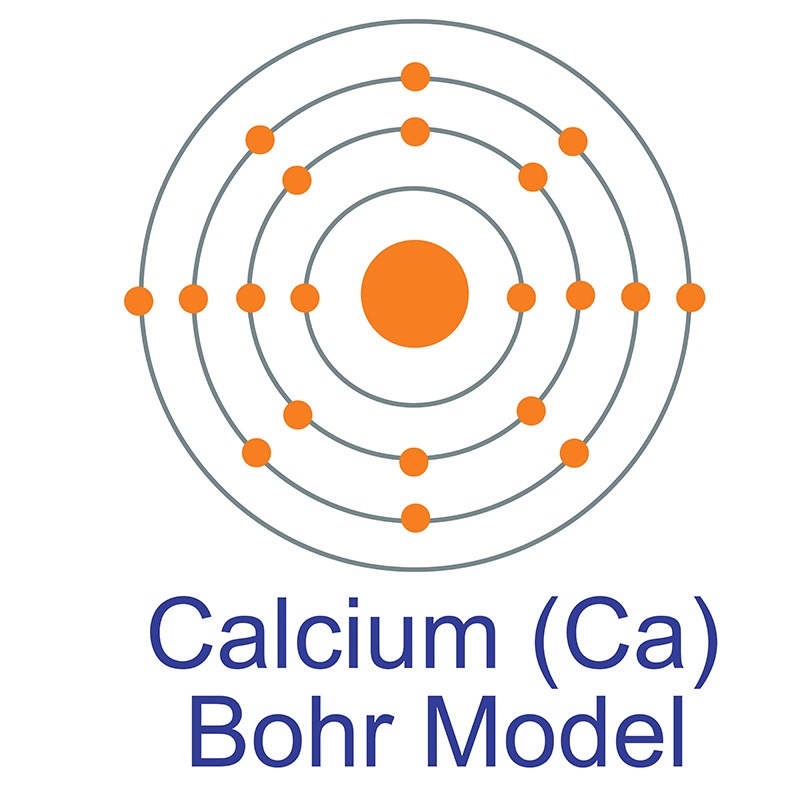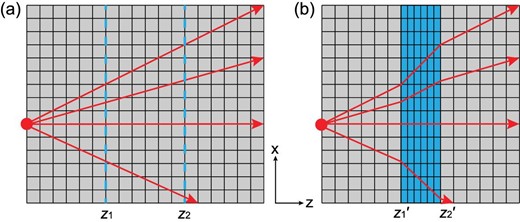SECTION 1. IDENTIFICATION
Product Name: Calcium Acetate
Product Number: All applicable American Elements product codes, e.g. CA-AC-02
, CA-AC-03
, CA-AC-04
, CA-AC-05
CAS #: 62-54-4
Relevant identified uses of the substance: Scientific research and development
Supplier details:
American Elements
10884 Weyburn Ave.
Los Angeles, CA 90024
Tel: +1 310-208-0551
Fax: +1 310-208-0351
Emergency telephone number:
Domestic, North America: +1 800-424-9300
International: +1 703-527-3887
SECTION 2. HAZARDS IDENTIFICATION
Classification of the substance or mixture
GHS Label elements, including precautionary statements
Pictogram none
Signal word Warning
Hazard statement(s)
May form combustible dust concentrations in air.
Precautionary
statement(s)
none
Hazards not otherwise classified (HNOC) or not covered by GHS
Combustible dust
SECTION 3. COMPOSITION/INFORMATION ON INGREDIENTS
Molecular weight : 158.17 g/mol
CAS-No. : 62-54-4
EC-No. : 200-540-9
No components need to be disclosed according to the applicable regulations.
SECTION 4. FIRST AID MEASURES
Description of first-aid measures
General advice
Consult a physician. Show this material safety data sheet to the doctor in attendance.
If inhaled
If breathed in, move person into fresh air. If not breathing, give artificial respiration.
Consult a physician.
In case of skin contact
Wash off with soap and plenty of water. Consult a physician.
In case of eye contact
Flush eyes with water as a precaution.
If swallowed
Never give anything by mouth to an unconscious person. Rinse mouth with water. Consult
a physician.
Most important symptoms and effects, both acute and delayed
The most important known symptoms and effects are described in the labelling (see section 2.2) and/or in section 11
Indication of any immediate medical attention and special treatment needed
No data available
SECTION 5. FIREFIGHTING MEASURES
Extinguishing media
Suitable extinguishing media
Use water spray, alcohol-resistant foam, dry chemical or carbon dioxide.
Special hazards arising from the substance or mixture
Carbon oxides
Calcium oxide
Advice for firefighters
Wear self-contained breathing apparatus for firefighting if necessary.
Further information
No data available
SECTION 6. ACCIDENTAL RELEASE MEASURES
Personal precautions, protective equipment and emergency procedures
Use personal protective equipment. Avoid dust formation. Avoid breathing vapors, mist or
gas. Avoid breathing dust.
For personal protection see section 8.
Environmental precautions
Do not let product enter drains.
Methods and materials for containment and cleaning up
Pick up and arrange disposal without creating dust. Sweep up and shovel. Keep in
suitable, closed containers for disposal.
Reference to other sections
For disposal see section 13.
SECTION 7. HANDLING AND STORAGE
Precautions for safe handling
Advice on safe handling
Avoid formation of dust and aerosols.Advice on safe handling
Further processing of solid materials may result in the formation of combustible dusts. The
potential for combustible dust formation should be taken into consideration before
additional processing occurs.
Advice on protection against fire and explosion
Provide appropriate exhaust ventilation at places where dust is formed.
Hygiene measures
Handle in accordance with good industrial hygiene and safety practice. Wash hands before
breaks and at the end of workday.
For precautions see section 2.2.
Conditions for safe storage, including any incompatibilities
Storage conditions
Keep container tightly closed in a dry and well-ventilated place.
Store at Room Temperature.
Storage class (TRGS 510): 13: Non Combustible Solids
Specific end use(s)
Apart from the uses mentioned in section 1.2 no other specific uses are stipulated
SECTION 8. EXPOSURE CONTROLS/PERSONAL PROTECTION
Control parameters
Ingredients with workplace control parameters
Contains no substances with occupational exposure limit values.
Exposure controls
Appropriate engineering controls
Handle in accordance with good industrial hygiene and safety practice. Wash hands
before breaks and at the end of workday
Personal protective equipment
Eye/face protection
Use equipment for eye protection tested and approved under appropriate
government standards such as NIOSH (US) or EN 166(EU).
Skin protection
Handle with gloves. Gloves must be inspected prior to use. Use proper glove
removal technique (without touching glove's outer surface) to avoid skin contact
with this product. Dispose of contaminated gloves after use in accordance with
applicable laws and good laboratory practices. Wash and dry hands.
Body Protection
Choose body protection in relation to its type, to the concentration and amount of
dangerous substances, and to the specific work-place., The type of protective
equipment must be selected according to the concentration and amount of the
dangerous substance at the specific workplace.
Respiratory protection
Respiratory protection is not required. Where protection from nuisance levels of
dusts are desired, use type N95 (US) or type P1 (EN 143) dust masks. Use
respirators and components tested and approved under appropriate government
standards such as NIOSH (US) or CEN (EU).
Control of environmental exposure
Do not let product enter drains.
SECTION 9. PHYSICAL AND CHEMICAL PROPERTIES
Information on basic physical and chemical properties
a) Appearance Form: crystalline
Color: white
b) Odor No data available
c) Odor Threshold No data available
d) pH No data available
e) Melting
point/freezing point
Melting point: 160 °C (320 °F) - Decomposition
f) Initial boiling point
and boiling range
No data available
g) Flash point ()No data available
h) Evaporation rate No data available
i) Flammability (solid,
gas)
May form combustible dust concentrations in air.
j) Upper/lower
flammability or
explosive limits
No data available
k) Vapor pressure No data available
l) Vapor density No data available
m) Relative density 1.516 - 1.524 at 20 °C (68 °F) - Regulation (EC) No. 440/2008,
Annex, A.3
n) Water solubility soluble
o) Partition coefficient:
n-octanol/water
No data available
p) Autoignition
temperature
340 °C (644 °F) - Relative self-ignition temperature for solids
q) Decomposition
temperature
160 °C (320 °F) -
r) Viscosity No data available
s) Explosive properties No data available
t) Oxidizing properties No data available
Other safety information
Solubility in other
solvents
Alcohol - slightly soluble
SECTION 10. STABILITY AND REACTIVITY
Reactivity
No data available
Chemical stability
Stable under recommended storage conditions.
Possibility of hazardous reactions
No data available
Conditions to avoid
No data available
Incompatible materials
Strong oxidizing agents
Hazardous decomposition products
In the event of fire: see section 5
SECTION 11:
SECTION 11. TOXICOLOGICAL INFORMATION
Information on toxicological effects
Acute toxicity
Acute toxicity estimate Oral - 2,700 mg/kg
(Calculation method)
LD50 Oral - Rat - male and female - 2,700 mg/kg
(OECD Test Guideline 401)
Inhalation: No data available
LC50 Inhalation - Rat - male and female - 4 h - > 5.6 mg/l
(OECD Test Guideline 403)
Dermal: No data available
LD50 Dermal - Rabbit - female - > 20,000 mg/kg
(OECD Test Guideline 402)
No data available
No data available
Skin corrosion/irritation
No data available
Skin - Rabbit
Result: No skin irritation - 4 h
(OECD Test Guideline 404)
Serious eye damage/eye irritation
No data available
Eyes - Rabbit
Result: No eye irritation
(OECD Test Guideline 405)
Respiratory or skin sensitization
No data available
No data available
Germ cell mutagenicity
No data available
Mouse - male - Intratesticular
Result: negative
Remarks:
(ECHA)
Carcinogenicity
IARC: No ingredient of this product present at levels greater than or equal to 0.1% is
identified as probable, possible or confirmed human carcinogen by IARC.
NTP: No ingredient of this product present at levels greater than or equal to 0.1% is
identified as a known or anticipated carcinogen by NTP.
OSHA: No component of this product present at levels greater than or equal to 0.1% is
on OSHA’s list of regulated carcinogens.
Reproductive toxicity
No data available
No data available
Specific target organ toxicity - single exposure
No data available
Specific target organ toxicity - repeated exposure
No data available
Aspiration hazard
No data available
Additional Information
Not available
To the best of our knowledge, the chemical, physical, and toxicological properties have not
been thoroughly investigated.
To the best of our knowledge, the chemical, physical, and toxicological properties have not
been thoroughly investigated.
SECTION 12. ECOLOGICAL INFORMATION
Toxicity
No data available
No data available
Toxicity to algae ErC50 - Skeletonema costatum (marine diatom) - > 1,000 mg/l - 72
h
(ISO 10253)
Toxicity to bacteria
Persistence and degradability
No data available
Bioaccumulative potential
No data available
Mobility in soil
No data available
Results of PBT and vPvB assessment
PBT/vPvB assessment not available as chemical safety assessment not required/not
conducted
Other adverse effects
No data available
No data available
SECTION 13. DISPOSAL CONSIDERATIONS
Waste treatment methods
Product
Offer surplus and non-recyclable solutions to a licensed disposal company.
Contaminated packaging
Dispose of as unused product.
SECTION 14. TRANSPORT INFORMATION
DOT (US)
Not dangerous goods
IMDG
Not dangerous goods
IATA
Not dangerous goods
Further information
Not classified as dangerous in the meaning of transport regulations.
SECTION 15. REGULATORY INFORMATION
SARA 302 Components
No chemicals in this material are subject to the reporting requirements of SARA Title III,
Section 302.
SARA 313 Components
This material does not contain any chemical components with known CAS numbers that
exceed the threshold (De Minimis) reporting levels established by SARA Title III, Section
313.
SARA 311/312 Hazards
No SARA Hazards
Massachusetts Right To Know Components
No components are subject to the Massachusetts Right to Know Act.
No components are subject to the Massachusetts Right to Know Act.
Pennsylvania Right To Know Components
calcium diacetate CAS-No.
62-54-4
Revision Date
calcium diacetate CAS-No.
62-54-4
Revision Date
New Jersey Right To Know Components
calcium diacetate CAS-No.
62-54-4
Revision Date
SECTION 16. OTHER INFORMATION
Safety Data Sheet according to Regulation (EC) No. 1907/2006 (REACH). The above information is believed to be correct but does not purport to be all inclusive and shall be used only as a guide. The information in this document is based on the present state of our knowledge and is applicable to the product with regard to appropriate safety precautions. It does not represent any guarantee of the properties of the product. American Elements shall not be held liable for any damage resulting from handling or from contact with the above product. See reverse side of invoice or packing slip for additional terms and conditions of sale. COPYRIGHT 1997-2022 AMERICAN ELEMENTS. LICENSED GRANTED TO MAKE UNLIMITED PAPER COPIES FOR INTERNAL USE ONLY.
 The calcium atom has a radius of 197 pm and a Van der Waals radius of 231 pm. Calcium was discovered and first isolated by Sir Humphrey Davy in 1808. It is the fifth most abundant element in the earth's crust and can be found in minerals such as dolomite, gypsum, plagioclases, amphiboles, pyroxenes and garnets. In its elemental form, calcium has a dull gray-silver appearance. Calcium is a reactive, soft metal that is a member of the alkaline earth elements.
The calcium atom has a radius of 197 pm and a Van der Waals radius of 231 pm. Calcium was discovered and first isolated by Sir Humphrey Davy in 1808. It is the fifth most abundant element in the earth's crust and can be found in minerals such as dolomite, gypsum, plagioclases, amphiboles, pyroxenes and garnets. In its elemental form, calcium has a dull gray-silver appearance. Calcium is a reactive, soft metal that is a member of the alkaline earth elements.  It frequently serves as an alloying agent for other metals like aluminum and beryllium, and industrial materials like cement and mortar are composed of calcium compounds like calcium carbonate. It is also an biologically essential substance found in teeth, bones, and shells. The name "calcium" originates from the Latin word "calics," meaning lime.
It frequently serves as an alloying agent for other metals like aluminum and beryllium, and industrial materials like cement and mortar are composed of calcium compounds like calcium carbonate. It is also an biologically essential substance found in teeth, bones, and shells. The name "calcium" originates from the Latin word "calics," meaning lime.
